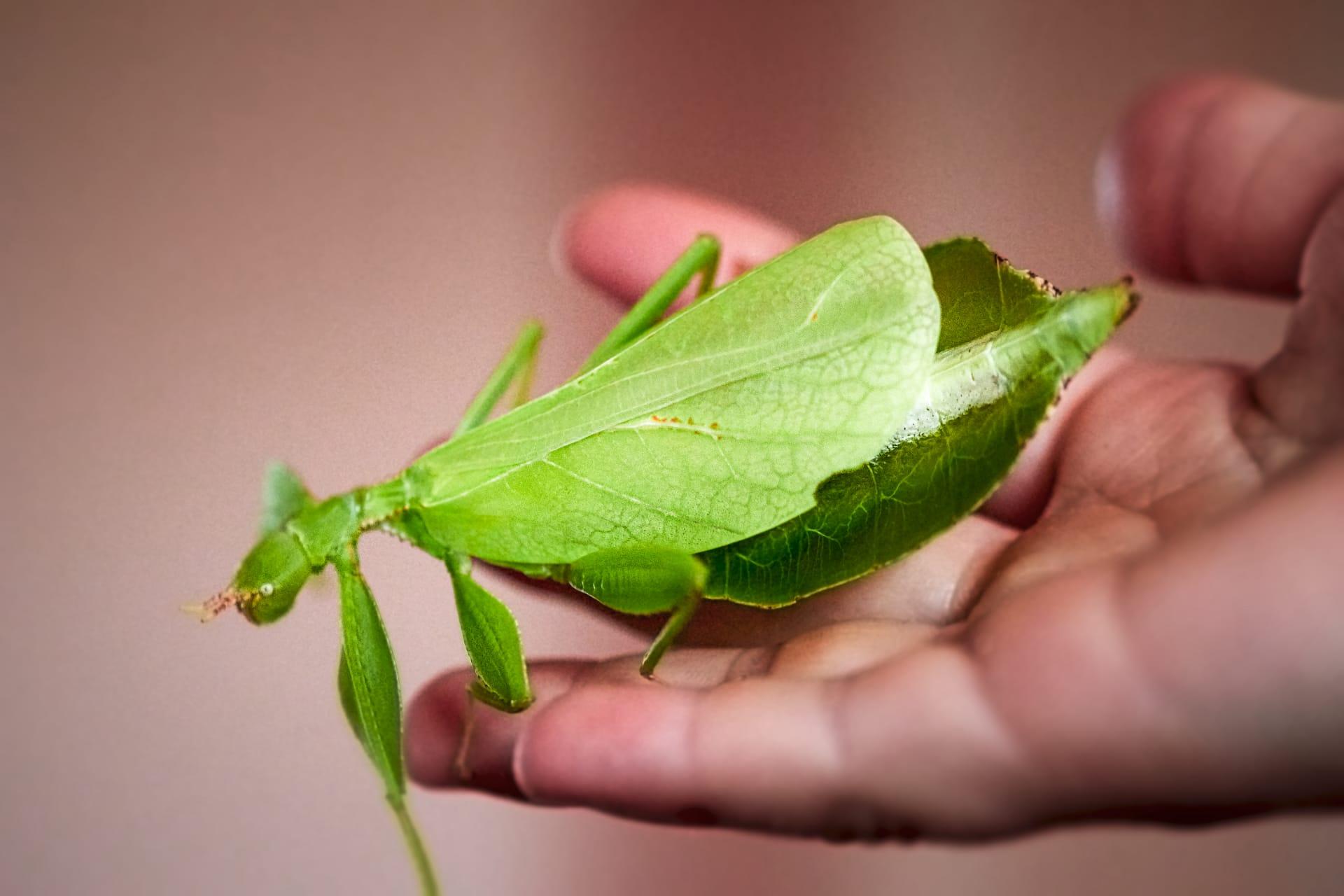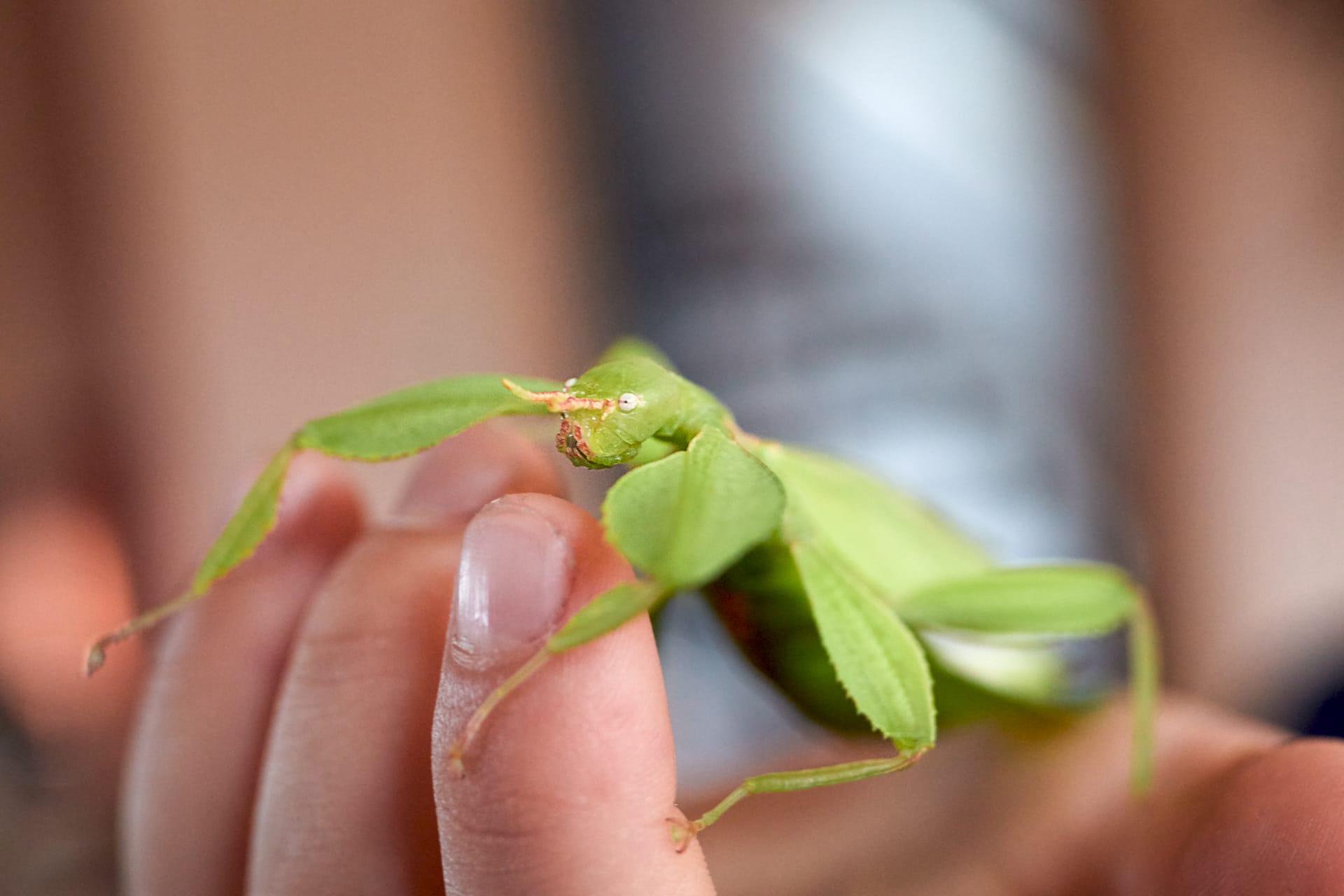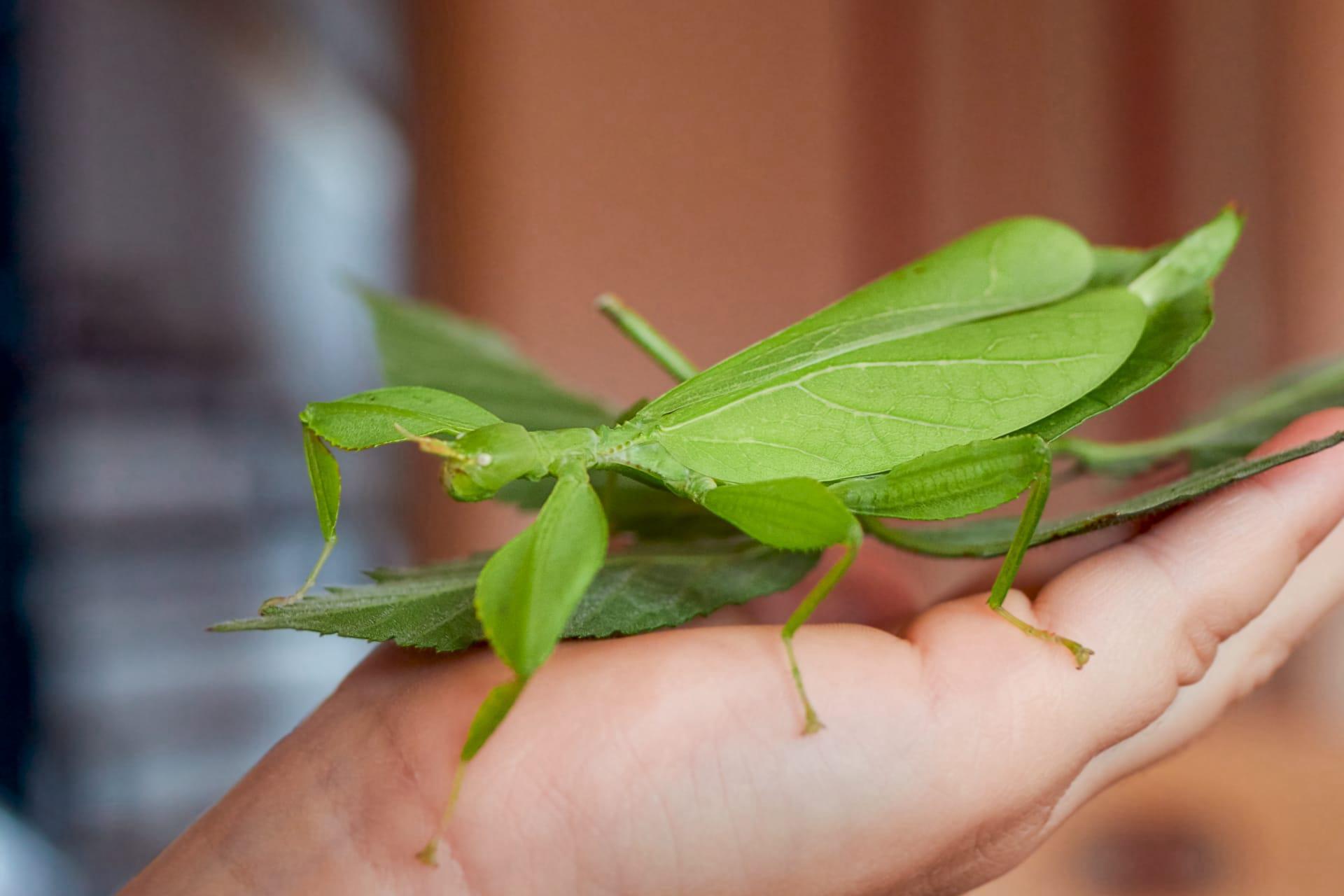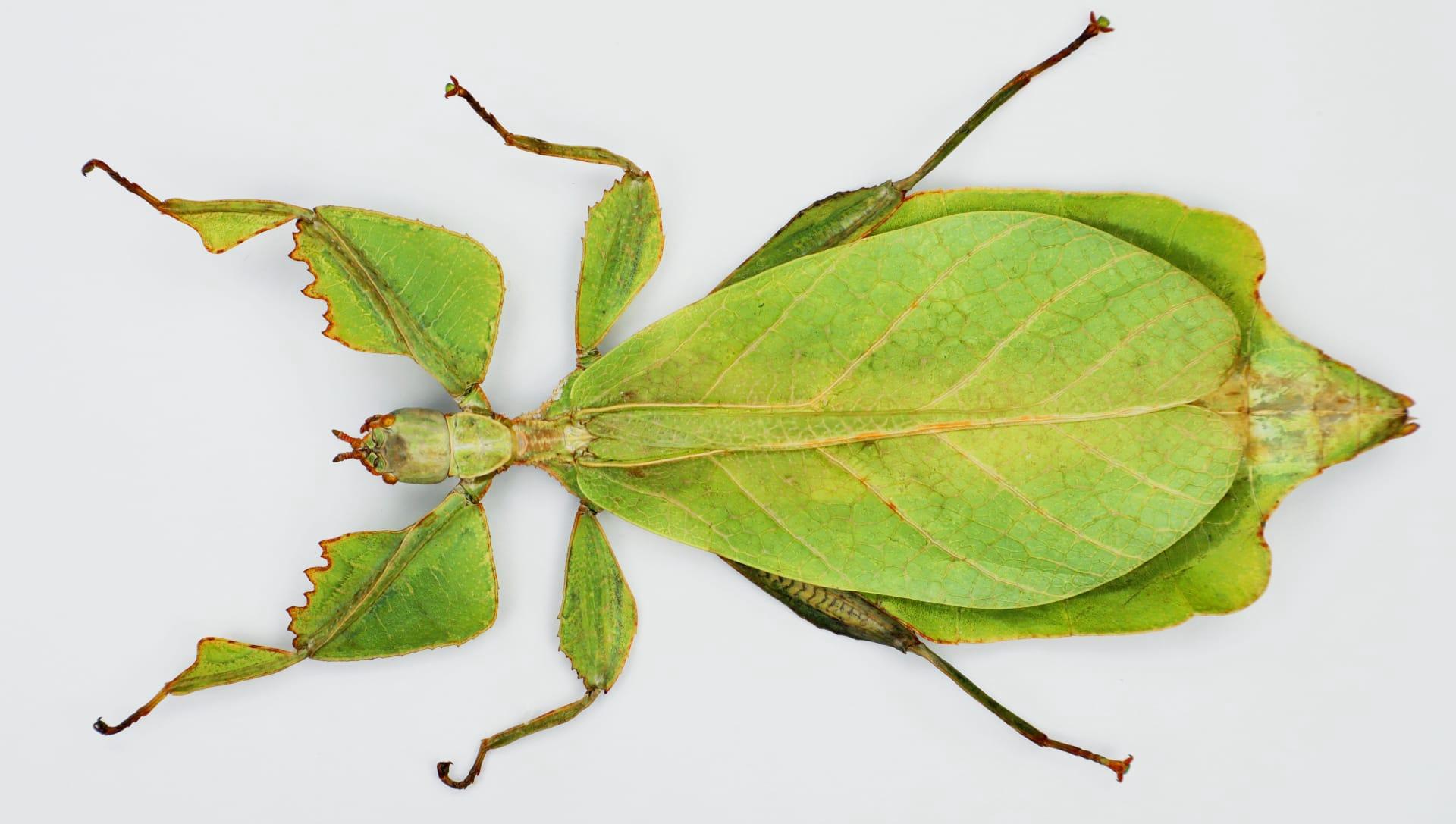1
Leaf insects, belonging to the genus Phyllium, are fascinating creatures, known for their striking resemblance to leaves. One incredible fact about these insects is their detailed mimicry. The Phyllium giganteum species, for example, can grow up to 4.3 inches (11 cm) in length, with a body that perfectly mimics a leaf, including vein-like structures and leaf-like coloration. This mimicry is not just for show; it's a crucial survival strategy. Predators often overlook these insects, mistaking them for actual leaves. This camouflage is enhanced by their motion – when they move, they sway gently, just like a leaf would in the breeze.
Another intriguing aspect of Phyllium is their sexual dimorphism – the distinct difference in appearance between males and females. Female leaf insects are larger and more leaf-like, enhancing their camouflage. They can measure up to 4.7 inches (12 cm) in some species, while males are typically smaller and less leaf-like, often having more slender bodies and visible wings. This difference plays a key role in their survival strategy. Females, due to their size and appearance, are better at hiding from predators, while males, being smaller and more agile, are better at escaping threats.

2
Leaf insects are not just masters of visual mimicry but also of behavioral mimicry. An interesting fact about them is their ability to mimic a leaf not only in appearance but also in movement. When threatened, they don't just rely on their physical camouflage; they enhance their disguise by rocking back and forth, mimicking a leaf being moved by the wind. This behavior is so convincing that predators often completely ignore them, even when they are in plain sight.
The reproduction strategy of Phyllium is another fascinating aspect. Some species of Phyllium are capable of parthenogenesis, a form of asexual reproduction where females can produce offspring without mating. This ability is especially advantageous in environments where males are scarce. The offspring produced are typically female, ensuring the continuation of the species. This reproductive strategy not only underscores the resilience of these insects but also highlights their adaptability to various environmental conditions.

3
The diet of Phyllium species is highly specialized, making them fascinating subjects of study. They feed exclusively on leaves, with a preference for specific plant species. This selective diet can include plants like guava, mango, and raspberry. Their specialized eating habits mean that they play a unique role in their ecosystems, particularly in the process of leaf litter breakdown and nutrient cycling. Their feeding habits also make them sensitive to environmental changes, particularly deforestation and habitat loss.
Another interesting fact about Phyllium is their life cycle. From egg to adult, leaf insects go through a process called incomplete metamorphosis. This means that they do not have a pupal stage like butterflies. Instead, they hatch from eggs as nymphs, which already resemble miniature adults. As they grow, they molt several times, each time looking more like a mature leaf insect. This gradual development allows them to blend into their environment at every stage of their life, providing continuous protection against predators.

4
The eggs of Phyllium species are as unique as the insects themselves. These eggs mimic seeds in appearance, complete with a shape and texture that resembles plant seeds. This adaptation protects the eggs from predators and also from parasitic insects that might otherwise target them. The time it takes for these eggs to hatch can vary greatly, ranging from a few months to over a year, depending on environmental conditions like temperature and humidity.
One of the most interesting behaviors of Phyllium is their communal lifestyle. Unlike many other insects that are solitary, some species of leaf insects have been observed living in groups, especially during the nymph stage. This social behavior is thought to provide several advantages, such as increased effectiveness of their camouflage (a group of leaf-like insects looks more like a cluster of leaves) and better protection against predators. This communal lifestyle adds another layer to their already complex survival strategies.

5
The coloration of Phyllium is not just for camouflage; it also changes in response to environmental factors. For instance, leaf insects may change color during different seasons or after molting to better match their surroundings. These color changes can range from different shades of green to brown, helping them blend into their environment whether it's lush green foliage or dried leaves. This ability to adapt their coloration adds to their effectiveness as masters of disguise.
The role of Phyllium in local cultures and education is noteworthy. In many parts of the world, especially in Southeast Asia where they are commonly found, leaf insects are considered symbols of good luck and are often used in educational settings to teach about mimicry and adaptation in nature. Their fascinating appearance and behavior make them excellent ambassadors for the insect world, sparking curiosity and interest in the natural world among people of all ages.